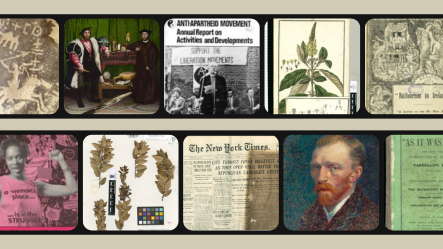
When we hear the name JSTOR, scholarly journal articles often come to mind. However, over the years, the platform has evolved into so much more than a database of academic journals.
JSTOR is still expanding! It currently contains a vast array of resources, making it an indispensable tool for students and academics across 75 different disciplines. It also includes electronic books from over 300 academic publishers and, by August 2024, will fully integrate the ArtSTOR database into its platform.
Recognizing the significance of primary sources in academic research and exploration, JSTOR has ventured into the realm of primary source collections. The Collections section offers a compilation of images and primary sources contributed by libraries, museums, and archives from around the world. This inclusion broadens the scope of research possibilities and enhances the depth of insights.
Beyond the expansion of its core content, JSTOR sponsors several unique collections that cater to specialized interests and research fields. While you will need a St Thomas ID and password to explore, some noteworthy collections include:
- 19th Century British Pamphlets : This collection houses over 26,000 important pamphlets held in research libraries in the United Kingdom. It is a valuable resource for the study of sociopolitical and economic factors impacting 19th-century Britain.
- Struggles for Freedom : Southern Africa : Comprising of over 190,000 pages of documents and images, this collection documents the liberation of Southern Africa and the dismantling of the Apartheid regime in South Africa.
- World Heritage Sites : Africa : Linking visual, contextual, and spatial documentation of African heritage sites, this collection houses over 57,000 objects, ranging from photographs and 3D models, to historical maps, and research.
- Global Plants : With nearly 3 million objects, it is the largest community-contributed database in which herbaria share their plant-type specimens. Experts determine and update the names of plants, making it an invaluable resource for botanists and researchers in the field.
With these integrations, JSTOR is truly living up to its tagline “Explore the world’s knowledge, cultures, and ideas.”
By: Ann Kenne, Head of Special Collections and University Archivist
Images in the above media are from JSTOR expanded collections